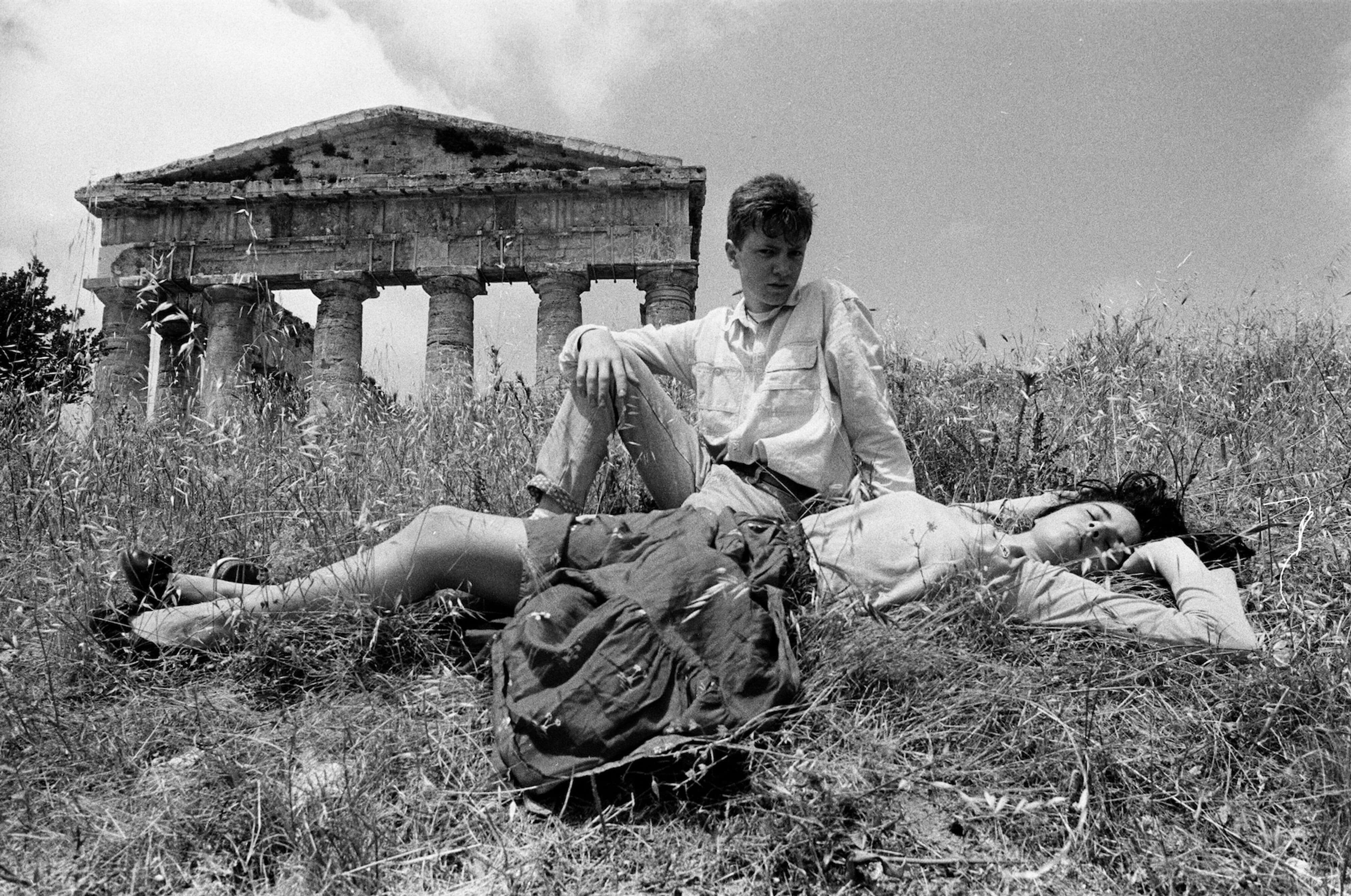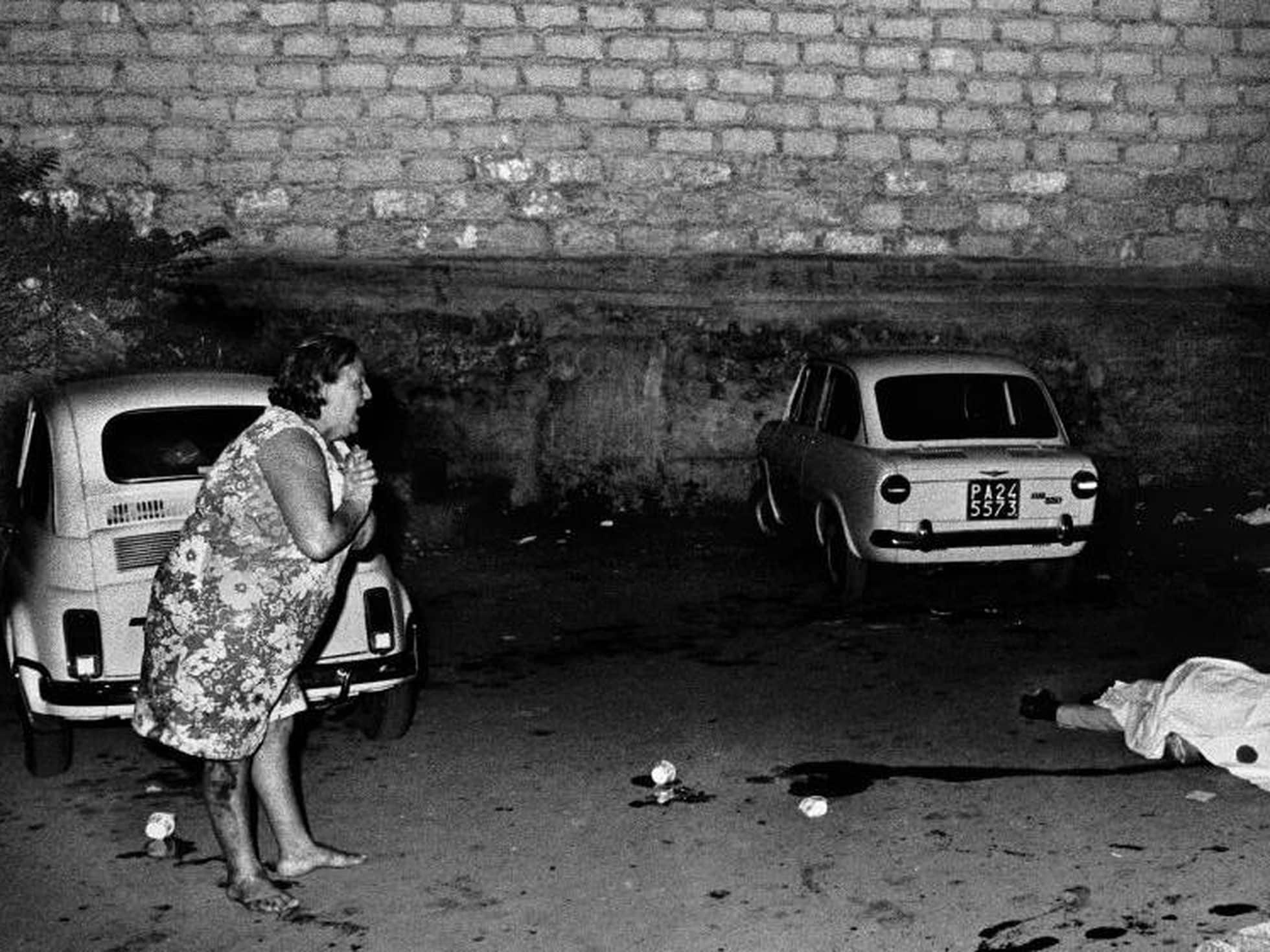- Home
- Sicilian Culture
- Letizia Battaglia
Letizia Battaglia: Capturing Life Through the Lens
In documentary photography, Letizia Battaglia (1935-2022) stands as an iconic figure. With her keen eye and undying passion, she captured the raw essence of life in Sicily during the island's tumultuous years like no other.
Letizia Battaglia's work is a collection of photographs and a visual diary confronting the dark realities of violence, poverty, and corruption while celebrating the human spirit's beauty and resilience.
Her images can transport us to a different time and place, immersing us in Sicily's streets and people's hidden stories.
From capturing the anguish of grieving families to the defiance of mafia bosses, she fearlessly exposes society's underbelly, shedding light on issues ignored or silenced.
Photography was just one tool in Battaglia's struggle for social justice. In addition to taking pictures, she produced articles, books, and documentaries and spoke at conferences.
In this article, we delve into Letizia Battaglia's exquisite works, exploring the stories behind her iconic photographs and her art's impact on the world.
 Segesta, 1986
Segesta, 1986The Impact of Letizia Battaglia's Work on Photojournalism
At a time when many photographers were focused solely on aesthetics, Battaglia delved into the harsh realities of life in Sicily - particularly the violent repercussions of the Mafia's grip over the region. Her images transcended mere documentation; they became visceral narratives that echoed the struggles and triumphs of ordinary people.
Her fearless approach to documenting the harsh realities of life showcased the power of photography as a tool for social commentary. Battaglia's work exemplified how images could provoke thought, inspire change, and resonate emotionally.
Battaglia's dedication to her craft has had a lasting influence on documentary photography. Many contemporary photojournalists cite her as a key inspiration, noting how her work has shaped their understanding of the ethical responsibilities that come with the camera.
Her legacy encourages a new generation of photographers to seek the truth and highlight the stories that must be told, especially those that challenge the status quo. In doing so, Letizia Battaglia has solidified her place as a transformative figure in photojournalism, reminding us of a single photograph's profound impact on society.
 Friends, Cefalu 1981.
Friends, Cefalu 1981.Letizia Battaglia's Early Life and Career
Letizia Battaglia was born on March 5, 1935, in the heart of Palermo, Sicily. Because her father worked in the military, the family traveled all over Italy until Letizia turned ten.
The young girl's return to Palermo was a dramatic experience. In northern Italy, she had been used to a freer life; now, she could no longer walk alone in the city without being harassed by men.
Letizia enrolled in a boarding school for girls in Palermo. At the time, it was a typical place for a child from a bourgeois family.
However, Letizia was not attracted by the traditional role of a woman. At the age of fifteen, she went to work for the newspaper L'Ora. The newspaper became a significant factor in her later life.
At sixteen, Letizia got married, hoping it would free her from parental control and let her find her own direction in life. In the years to come, she found it was not so.
Letizia's relationship with her hometown of Palermo was always a complicated one. Growing up in a city marked by beauty and brutality, her childhood experiences shaped her worldview and ignited a passion for social justice. On the other hand, his innate desire for freedom was a hard match to the city's atmosphere.
1971, Letizia Battaglia moved to Milan with her two minor daughters. The third daughter was of age and did not go with her. Letizia wanted her daughters to grow up in a healthier environment.
In Milan, Letizia discovered photography. As a photographer, she was self-taught - learning by trial and error.
 Silvia Sunbathes While Franco Hoes (1984)
Silvia Sunbathes While Franco Hoes (1984)In 1974, L'Ora persuaded Letizia to return to Palermo. There, she became head of the magazine's photography department. If her interests had previously been varied - theatre and culture in general - the return to Palermo launched her career as a photographer.
In many ways, the situation was tense. The Mafia and politicians are working in seamless collaboration, destroying everything beautiful in the city.
The Mafia itself was not discussed at the time. At most, it was said to consist of some unrelated petty criminals. The true nature of the organization had yet to be discovered or recognized.
In the 1970s, the left-wing daily newspaper L'Ora was the only newspaper to report on the Mafia. At the same time as its journalists, a small group of policemen, judges, and lawyers began investigating the organization - for which many paid with their lives.
During the 1970s and 1980s, Battaglia's work gained recognition for its emotional depth and authenticity, setting her apart in a field often dominated by more sensationalist approaches. Her photographs connect us to the subjects, making us feel their pain and resilience.
In the 1970s and 1980s, Battaglia's role in documenting the Second Mafia War was crucial. This war erupted when the Corleone Mafia took over the Cosa Nostra, which had become rich in the heroin business. Hundreds of people, including officials such as police officers, judges, lawyers, politicians, and journalists, lost their lives.
Anyone whose loyalty to the Corleoneans was not 100% was killed. As mafia violence became more brutal, those who opposed it also organized themselves more tightly.
Brutal violence also drove mafia members to testify. The code of omertà - silence - began to crack. The big breakthrough came when Tommaso Buscetta, one of Cosa Nostra's biggest bosses, was arrested in Brazil.
Buscetta knew he was going to end up dead in Palermo. After a failed suicide attempt he started to talk to Judge Falcone to destroy his enemies - the Corleoneans led by Toto Riina.
Buscetta's testimony was the first time a high-ranking Mafia member agreed to share his knowledge of the organization. It revealed the full extent of the Mafia's structure. The only thing he remained silent about was his own involvement.
 Vincenzo Battaglia had gone out to buy cannoli. They killed him in the dark, among the garbage. His wife had tried in vain to help him, 1976
Vincenzo Battaglia had gone out to buy cannoli. They killed him in the dark, among the garbage. His wife had tried in vain to help him, 1976The Themes and Subjects in Letizia Battaglia's Photography
Throughout the years of violence in Palermo, Letizia Battaglia was there with her camera. Her images have survived as powerful testimony to the horrors of that time.
Her photos, in all their simplicity, are infinitely evidential. Their intensity is still impressive decades after the events.
In addition to the Mafia murders, Letizia photographed a lot of women and girls in particular. In them, she saw her own hopes and dreams amid tragic circumstances.
In her pictures, men and little boys try to fulfill their roles. They act tough, even though their eyes have a mute hopelessness. Only the higher-ups in the Mafia walk tall - when they are not lying in a pool of blood.
Letizia also depicted many ordinary life events: religious events, parades, poverty and wealth, beauty and decay. The atmosphere is bare and palpable, and the violence is shown in all its banality.
At work, Letizia suffered abuse: she was punched, kicked, and scolded, but did not let it bother her. More than the treatment she received, she was disgusted by the smells of blood, suffering, and despair. You can almost sense these, too, by looking at some of her pictures.
Through her lens, Battaglia captures the pain of loss and the hope and determination that characterize the life in harsh conditions. Each iconic photograph is a testament to her commitment to documenting life in all its complexity, leaving an indelible mark on the world.
 Via Calderai Palermo 1991
Via Calderai Palermo 1991Letizia Battaglia's Contribution to Social and Political Change
Photojournalism has traditionally been a male preserve. In such an environment, women must be tougher than their male counterparts.
Letizia Battaglia was a pioneer. She was part of a new generation of women photographers who emerged between the late 1960s and early 1980s.
Battaglia was the first European female photographer to receive international recognition for her work.
As influential as her photographs were, Letizia still felt helpless in the face of the injustices surrounding her. This prompted her to turn to politics.
Letizia joined the Green Party, which sought to curb Palermo's destructive overbuilding. Although initially skeptical, he eventually found a partner in the city's reform in the city's mayor, Leoluca Orlando.
Together, the two began to redevelop Palermo. That time has been called the spring of Palermo. Letizia herself participated in planting trees, cleaning the streets, repairing paving stones, and setting benches along the city streets.
Her work earned her the respect of the locals. She was also instrumental in creating new land-use laws to prevent destructive overbuilding.
In 1992, the Mafia launched yet another campaign of assassination. Salvo Lima of the Christian Democratic Party and Judges Giovanni Falcone and Paolo Borselino, along with a number of their bodyguards, were targeted.
It was at this point that Sicilians really began to get fed up with the murders and the organization that carried them out. Contrary to the hopes of Toto Riina, the organizer of the murders, the anti-mafia front became even stronger.
Letizia's work began to wear on her. She gave up photography and set up a book publishing house, using it to publish hundreds of works on subjects that were important to her.
As bleak as the situation looked, it was a new beginning for Palermo. Under Leoluca Orlando, the city entered a new golden age.
 Untitled, Palermo 2016
Untitled, Palermo 2016Conclusion
Letizia Battaglia's exquisite works have left an indelible mark on photography. Through her powerful images, she has captured the essence of life in Sicily, at a certain point in time, revealing the beauty and brutality that coexisted in the region.
Her commitment to documenting the human experience has transformed the field of photojournalism and inspired countless individuals to engage with the world around them. Battaglia's legacy is one of courage, empathy, and unwavering dedication to truth-telling.
From the stark realities of violence to the resilience of the human spirit, her photographs invite us to confront uncomfortable truths while celebrating the strength of those who endure.
Letizia Battaglia's lens has not only captured life but also illuminated the path toward a more just and equitable world.
Related:
(A note on pictures: I do not own the rights to the images on this page. Each of them—and many more—can be found in the book "Letizia Battaglia. Anthology." It is highly recommended for anyone interested in Battaglia's photography and has also served as my primary source on Battaglia's life.)
(December 16, 2024)
Recent Articles
-
Sicilian Food - Rich Flavors, Endless Passion
Apr 09, 25 09:54 AM
All you need to know about Sicilian food, its ingredients and history. -
Things to Do in Palermo - Tips for a Perfect Holiday
Apr 05, 25 04:27 AM
Things to Do in Palermo - From historic landmarks to delicious food, this guide has it all. -
The Story of Tommaso Buscetta: From Mafia Boss to Key Witness
Mar 30, 25 05:12 AM
Tommaso Buscetta built Sicilian Mafia into a global empire - which he then destroyed.
Follow MANY FACES OF SICILY on Facebook, Instagram, Bluesky & Pinterest
Contact: vesa@manyfacesofsicily.com


